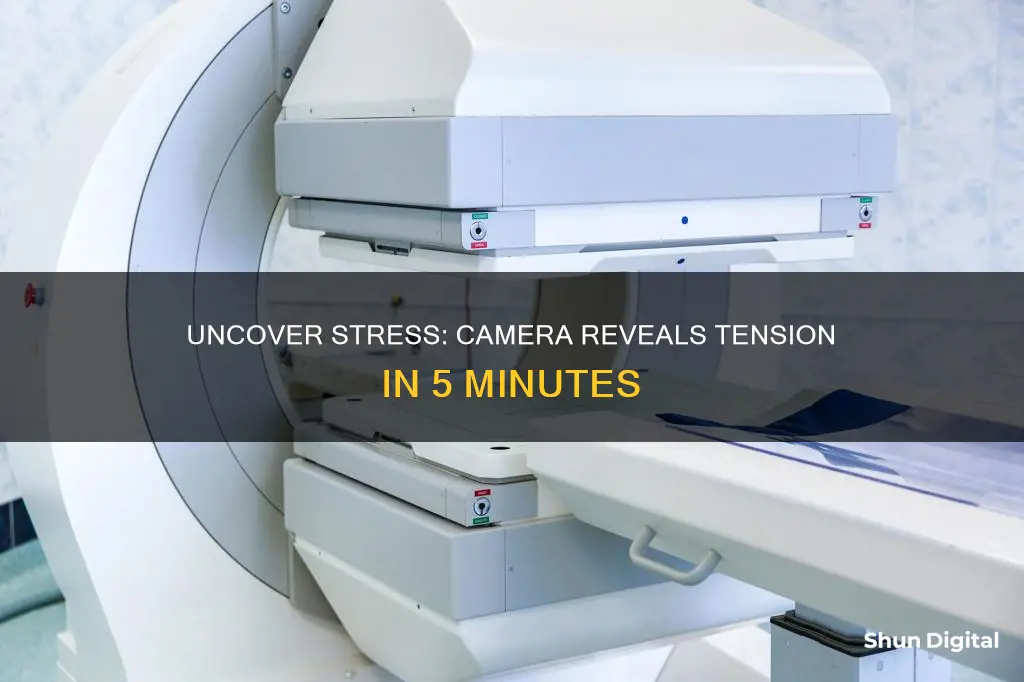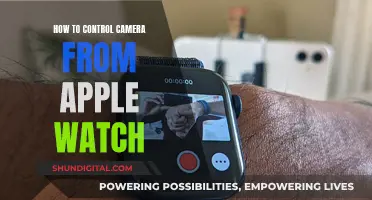
Stress is a universal physiological response to strong stimuli, or stressors, which can manifest in various symptoms and phases. While stress management techniques continue to make headlines, companies and laboratories are introducing more accurate methods for the early detection and self-diagnosis of stress.
One such method is remote stress detection, which can be achieved through a system that combines photoplethysmography (PPG) and thermography. This system can continuously and reliably measure two different types of cardiovascular events: blood volume pulse and vasoconstriction/dilation-induced temperature changes of the nose tip.
The use of a smartphone camera with a low-cost thermal camera added on can help create cheap, convenient, and mobile monitoring systems for stress detection.
| Characteristics | Values |
|---|---|
| Method | Heart rate detection |
| Measuring the concentration of various substances in blood and saliva, such as cortisol or amylase | |
| Psychological tests (surveys) |
What You'll Learn

Heart rate variability
HRV reflects the ability of the heart to respond to various physiological and environmental stimuli. The greater the variability, the better the response to stress. Low HRV is associated with impaired autonomic nervous system (ANS) function and a body that has ceased to adapt to stressful situations.
HRV can be measured via an electrocardiogram (ECG) or with the recent technological development of remote heart rate detection via a webcam. It is a simple and widely available method in hospitals and laboratories.
HRV has been associated with stress in many studies. For example, lectures had a negative effect on HRV for professors, and students with a strong academic load had lower HRV, with female students being more affected.
HRV is difficult to interpret as it varies from person to person and decreases with age. However, people with high HRV may have greater cardiovascular fitness and may be more resilient to stress.
Stream Cove Camera Footage Directly to Your PC
You may want to see also

Blood volume pulse
BVP is commonly used as an indication of psychological arousal in affective computing and human-machine interfaces. It is also used in access technology applications, providing an alternative means for the expression of functional intent in individuals who are unable to use physical movement or speech.
BVP is typically measured from the fingers or hands. However, this can be undesirable when recordings are affected by motion and pressure artifacts, or when physical factors such as skin abrasion and amputation are present. Alternative measurement sites include the toes, ear, and distal forearm.
BVP measurements can be affected by various localised phenomena, including metabolism, vascular dynamics, arterial blood pressure, and flow, and surface temperature. Local skin conditions, such as skin temperature, may also impact BVP readings. For example, BVP signal amplitudes are higher when the sensor is placed over an artery.
BVP signals can be down-sampled to 256 Hz prior to analysis. A simple signal processing technique can be used to create similar amplitudes of each peak of BVP, helping to detect peaks and measure the time interval between them.
BVP measurements can be used to calculate various features, including:
- Mean BVP: the average value of the BVP signal
- Range BVP: the range of the BVP signal
- Heart rate: the rate of heartbeats, calculated as the inverse of the distance between successive peaks of the BVP signal
- Heart rate variation: the standard deviation of the heart rate
Why Smartwatches Lack Cameras: A Privacy-First Approach
You may want to see also

Vasoconstriction
The Physiology of Vasoconstriction
During vasoconstriction, there is an acceleration of heart and lung action, and constriction of blood vessels in many parts of the body. There is also dilation of blood vessels for the muscles, and inhibition of digestion, tear production, and salivation.
Detecting Vasoconstriction
There is currently no widely accepted standard for evaluating stress, but several methods can be used to detect vasoconstriction, including:
- Psychological tests and surveys
- Measuring the concentration of substances like cortisol or amylase in blood and saliva
- Heart rate detection, specifically by tracking Heart Rate Variability (HRV)
Managing Vasoconstriction
Given the link between stress and vasoconstriction, stress reduction techniques may be beneficial for those with cardiovascular disease. This could include interventions aimed at the brain and behaviour, such as relaxation or mindfulness training.
A Simple Guide to Watching Yi Camera Footage in Real-Time
You may want to see also

Heart rate detection
The change in heart rate is most easily tracked under experimental conditions. Among various heart rate parameters, Heart Rate Variability (HRV) is one that can be used as an indicator of stress.
HRV reflects the duration of heartbeat intervals, called R-R intervals. The greater the variability, the better the response to stress. Low HRV transmits a monotonously regular heart rate and is associated with an impaired autonomic nervous system (ANS) function.
HRV has been associated with stress in many studies. For example, for professors, lectures had a negative effect on HRV. Students with a strong academic load on average had lower HRV, with female students being more affected by academic load.
The method of measuring HRV was also used in the Midlife in the United States Study to evaluate daily stress. Results showed that individuals with more pronounced affective reactivity to stressors also had lower levels of the HRV parameters. This may mean that the better a person can cope with daily stress and negative events in their life, the lower the risk of developing heart disease.
Remote Heart Rate Detection
A simple phone accelerometer can be used to register heartbeats, but this method is subject to movement artefacts. A more flexible solution can be a system for remote monitoring of cardiac activity to track heart rate parameters via a camera pointed at a user's face. The system does not require complete immobility and is easy to use. In addition, no special expensive equipment is needed — just a regular webcam and the "light shed on the pulse".
Pairing TV and Camera in GMod: The Ultimate Guide
You may want to see also

Respiratory rate
Stress affects the respiratory system. During stress, the airway between the nose and the lungs constricts, causing shortness of breath and rapid breathing. This is the body's "fight or flight" response, which is designed to protect the body in an emergency by preparing it to react quickly. However, if the stress response is prolonged, it can take a toll on the body.
Stress can make it harder to breathe for people with pre-existing respiratory diseases such as asthma and chronic obstructive pulmonary disease (COPD). It can also trigger asthma attacks and panic attacks in prone individuals.
Stress can be managed by engaging in regular physical exercise, getting adequate sleep, and maintaining a healthy social support network.
Smart TV Cameras: Are They Watching You?
You may want to see also
Frequently asked questions
Stress is a universal physiological response to strong stimuli, or stressors, and can manifest in many ways, including:
- Increased heart and lung action
- Constriction of blood vessels
- Liberation of energy sources
- Inhibition of digestion, tear production and salivation
- Partial loss of hearing and peripheral vision
- Shaking, dilation of pupils, and an effect on the body's sphincters
There are several methods for detecting stress, including:
- Psychological tests
- Measuring the concentration of cortisol or amylase in blood and saliva
- Heart rate detection
Heart Rate Variability (HRV) is a useful indicator of stress. This can be measured via an electrocardiogram (ECG), or with recent technological developments, it can be measured non-invasively and remotely via a webcam.







